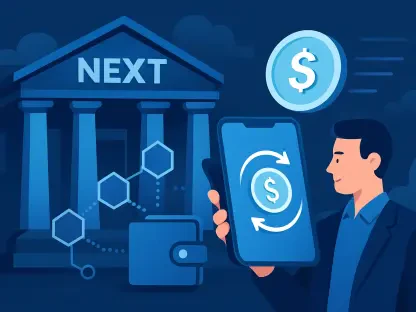Customers today expect the world from their banks. Security is non-negotiable, personalized digital services are rewarded with more engagement, and empathetic experiences are increasingly important.
But are the banks delivering? As data, AI, and customer data use cases expand in the financial sector, banks face the opportunity to provide what people need before they even ask. This article will explore how banks that offer tailored, proactive solutions can improve customer attraction and retention in 2025 and beyond.
The Advantage of “Anticipation”
Banks can get ahead of customer needs by offering small nudges that demonstrate care for the customer’s financial or personal situation. Instead of constantly pushing new products or features onto people, using customer data to proactively help the user is a significant gesture that most users appreciate.
Here are a few situations in which a modern banking app can do this:
Upcoming payment but low account balance: A suggestion to shift funds from savings or an offer of a short-term overdraft buffer.
Incoming salary payment: A message offering to set aside 10% for savings or investments.
High seasonal spending patterns: A helpful pop-up suggesting a ‘holiday budgeting tool’.
Naturally, these types of periodic messages help customers feel comfortable and cared for by their financial services provider. This will build loyalty, reduce friction, and encourage the user to explore and engage with the app more. And the benefits don’t end with the customer. Banks that predict what a customer may need will experience fewer support tickets, are more likely to successfully upsell/cross-sell, and build a reputation as a customer-friendly institution.
What Banks Need
Unified Customer Profiles
As with all digitally-enabled businesses, banks need a single view of their customers’ history to provide intelligent and proactive services. This ranges from past transactions, physical and digital interactions, to demographics and app usage trends. Without this comprehensive record of the user’s history, predictions may be inconsistent or even irrelevant to the customer.
AI Models for Prediction and Decisioning
To enable proactive messaging for customers, banks must move from descriptive analytics, which describe what happened, to predictive and prescriptive models, which uncover what’s likely to happen next and provide suggestions for next steps.
Automation and Workflow Orchestration
Delivering this type of proactive support only works if the responses happen instantly and smoothly. That’s where automation and workflow orchestration come in. Let’s take a look at the technical aspects that set the foundation for automated workflows on a digital banking platform.
Trigger-to-action pipelines: These use AI to detect certain signals, such as a balance dipping below a predefined threshold. At that point, automated workflows kick in to offer support.
Omnichannel execution: To keep experiences consistent for the customer, omnichannel execution is needed to deliver the same messaging across apps, SMS, email, and any other relevant channels the customer has opted to receive communications on.
Self-service enablement: To help customers get more done without needing staff assistance, self-service capabilities can enable changes in one click. For example: “You’re nearing your credit limit. Tap here to request a temporary increase.”
Secure integrations: With these types of workflows, multiple systems are often integrated, from payment technologies to CRM and core banking tools. It’s important to ensure that data moves securely between them without causing errors or exposing sensitive data.
Risks to Look Out For
With all the technologies and systems involved in predicting customer needs, it’s imperative that finance companies have strong security, governance, and privacy protocols. This will involve navigating common shortfalls of AI models, including potential bias, privacy and consent, explainability to avoid the “black box” problem, and the latest, most advanced cybersecurity systems.
Real-World Examples
MobiFin, a digital banking platform, is a prime example of a modern fintech player that delivers anticipatory, seamless, emotionally tuned features. In particular, the company:
Keeps a comprehensive record of all customer interactions, transactions, and engagements across all channels and touchpoints.
Tailors experiences based on how customer use their accounts, through advanced data analysis and AI
Onboards customers with seamless processes such as eKYC, document scans, liveliness checks, and more.
Provides proactive features like location-based services, instant chatbot support, and gamification to keep customers engaged and catered to.
Embeds real-time fraud detection, biometric checks, and anti-spoofing features to meet security and compliance requirements.
U.S. Bank has also been a frontrunner in providing modern, intelligent services to help companies make smarter financial decisions. The bank’s customer-focused app provides:
Intuitive money mentorship to help customers better understand their spending habits, get reminders about upcoming payments, and enjoy the benefits of actively saving money.
Complete visibility of users’ financial portfolio, from deposits and cards to investments and loans, in one place.
Simplified processes for opening new accounts, applying for mortgages, loans, and credit cards.
What’s Next in Predicting Customer Needs
Next-best action systems
Next-best action systems are poised to transform already-personalized experiences with hyper-relevant interactions. Using AI and real-time data, next-best action systems will enable banks to create a repository of potential actions that may apply to the user, while eligibility and context help determine which one is best for the customer.
Emotional or sentiment analysis
This examines written and spoken words to assess customer satisfaction levels in all communications with the bank. Further innovation in sentiment analysis could potentially help banks stay ahead of market trends, customer expectations, and competitor insights.
Composable banking and modular architecture
Again, MobiFin is at the forefront of the move towards proactively anticipating customer needs. Composable, modular architecture enables banks to add or remove relevant features without revamping the entire backend infrastructure.
Granular personalization
With granular personalization, users can set micro-preferences that ensure their banking app experience works. Customizing these settings can change the app’s communication style, notification delivery, and specific aspects of its user interface.
Conclusion
Banks that master the art of using data, AI, and behavioral insights to deliver what customers want before they realize it will win in the future of finance. To succeed, these financial institutions need to deliver not only the strongest tech-enabled experiences but also empathy, effective data governance, and a customer-first mindset. It’s no longer enough to offer more; you need to offer the right services so that customers feel known and seen.









